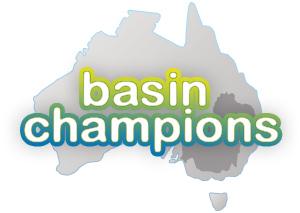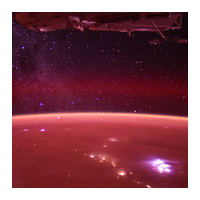Search for SIDA+SP.+(MURRAY+SPRINGS+R.W.JOHNSON +MRS919) returned 5,698 results.
Refine results
Refine results
Section
- Locality (4,733)
- Species (341)
- Region (249)
- Common Name (222)
- Biodiversity Science project (72)
- Site Page (30)
- Data provider (27)
- Data resource (13)
- Institution (7)
- Support article (3)
- Collection (1)
Image available
- Yes (220)
Taxonomic status
- Accepted (182)
- Synonym (63)
- Heteroptypic Synonym (49)
- unreviewed (25)
- Homotypic Synonym (12)
- Miscellaneous Literature (3)
- Pro-parte Synonym (3)
- unreviewedSynonym (2)
- Excluded (1)
Conservation status in Australia
- Endangered (7)
- Critically Endangered (2)
- Vulnerable (2)
- Extinct (1)
Conservation status in ACT
- Endangered (2)
- Vulnerable (1)
Conservation status in NSW
- Endangered (2)
Conservation status in QLD
- Endangered (1)
Conservation status in VIC
- Endangered (6)
- Critically Endangered (2)
- Vulnerable (2)
- Extinct (1)
- Threatened (1)
Conservation status in TAS
- Endangered (1)
Conservation status in SA
- Rare (3)
Conservation status in WA
Conservation status in NT
- Endangered (1)
- Vulnerable (1)
-
Biodiversity Science project: S2S Thurgoona BioBlitz 2012
The Thurgoona Bioblitz 2012 took place over two days on Friday 18th May and Saturday 19th May. The event involved 36 wildlife surveys at a number of sites and habitats throughout Thurgoona, focusing on birds, mammals, reptiles, amphibians, and invertebrates. Over 300 individual sightings and 100 species were recorded at the event...

-
Biodiversity Science project: Basin Champions
Basin Champions is a free river health investigation challenge. It is open to school classes from years 3 to 10 from across the Murray–Darling Basin. Basin Champions combines interactive videoconferencing with an in-class river health investigation to teach students about the importance of healthy rivers. It is closely aligned with outcomes from the Australian Science and Geography curricula, as well as the cross-curriculum priority area of Sustainability.

-
Biodiversity Science project: Sloane's Champions: helping a Thurgoona local
Sloane’s froglet (Crinia sloanei) is a small (up to 25 mm in length) threatened olive-brown coloured frog. In NSW, Sloane's froglet is now only found in a few locations along the Murray River. One of the largest populations is located in the Thurgoona-Wirlinga area of Albury...
-
Site Page: ALA Educational Resources for primary school classes – Atlas of Living Australia
Posted on 13th March 2015 It can be beneficial (and more importantly, fun!) to move the science classes out of the classroom and into the outdoors, and primary school teacher Wendy Johnson from Gippsland Grammar in Victoria has done just that, by utilising the Atlas of Living Australia (ALA) and its educational resources with her students...
-
Biodiversity Science project: Dark Skies ISS
Right now there are around 1.800.000 images at the Johnson Space Center database (The Gateway of the Astronauts). Around 1.200.000 images were taken aboard the ISS (date 20/02/2014). However the number of the classified images is much smaller and there is no archive of georeferenced images. There is a project to classify the day time images (Image detective). But, the techniques that are used in this project are not useful for the classification of night time images...

-
Biodiversity Science project: Visualizing Health
When it comes to our bodies, data abounds. We all have a blood pressure, weight, cholesterol levels, A1c, BMI, and more. We have risks, too. We might have or be at risk for cancer, or heart disease, or have a higher risk of experiencing a side effect of a medication or treatment than someone else. In theory, this data can help us make better decisions about our health. Should I take this pill? Will it help me more than it hurts me? How can I reduce my risk? And so on...

-
Site Page: STARportal – Atlas of Living Australia
Posted on 19th December 2018 Online portal to inspire young people to discover science, technology, engineering and maths. An online resource – STARportal – is the go-to place for families and teachers to discover local STEM activities for the children in their lives. It offers the most comprehensive collection of STEM activities and providers in Australia...
-
Biodiversity Science project: Bioblitz Harms Woods
Harms is one of the best spots for spring wildflower sightings in the region, as well as a great place to spot spring migratory birds, especially warblers.

-
Site Page: Taxonomist Appreciation Day – Atlas of Living Australia
Posted on 19th March 2024 19th March is the perfect day to celebrate and share some facts about tax(onomy) in the Atlas of Living Australia (ALA)! We sat down with Cam Slatyer who is a Project Manager in the ALA to chat about his extensive experience and incredible stories working across taxonomy throughout his career. Q: How is taxonomy evolving in the ALA and what’s your role in this project? A: The ALA has a fascinating challenge with taxonomy...
-
Biodiversity Science project: Queen Quest
Queen Quest is a bumble bee queen phenology project. It is a joint effort between UNL’s Bumble Boosters team, University of Minnesota’s Bee Squad, and citizen scientists to track first instances of bumble bee queen sightings in the spring. Little is known about the long-term and cyclical effects of climate on bumble bee populations. A key project objective is to determine the relationship and long-term impacts of climate on bumble bees...
